5. It was Charles Perrault who painted the girl's hood in red color. Color red can mean many things but in this case it is obviously connected with sin.
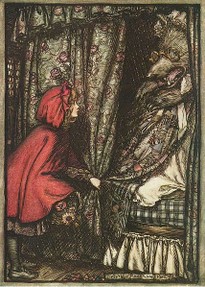 In Perrault's time only ladies of negotiable virtues wore red and looking at:
In Perrault's time only ladies of negotiable virtues wore red and looking at:
- his audience (adults in the court of Louis XIV),
- the allusive dialogue between the wolf and the girl,
- the action itself (she undresses before she gets in bed - yes, Grimms cleared all that),
it is very clear Perrault was talking about man-woman relationship.
It was especially written as a warning to young girls as an easy prey of older (rich) men.
6. The color of Red Riding Hood's cap in versions before Perrault is not always mentioned. But if it is, it is gold.
Looking the mythological explanation of Red Riding Hood this is really clear. Mythologists understand this story as a story about day and night, the girl is representing the sun and wolf steals it every evening.


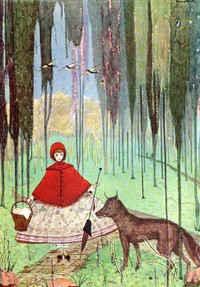
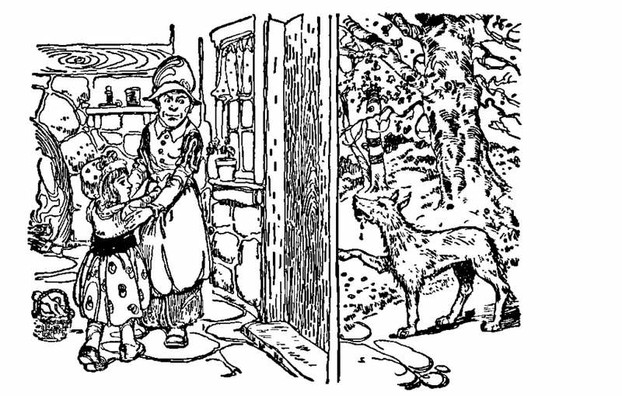

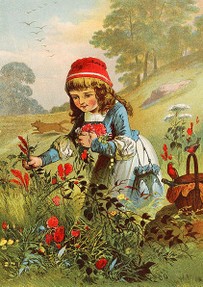
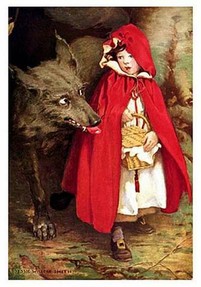 In Red Riding Hood the most disturbing were:
In Red Riding Hood the most disturbing were: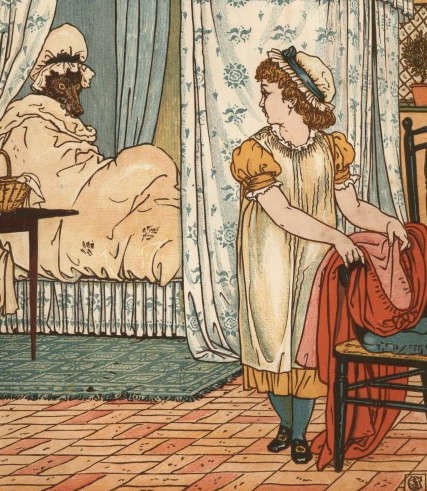
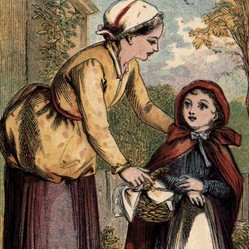

 Vintage Postcard Artists with 10 Examples of Easter Cardson 02/21/2025
Vintage Postcard Artists with 10 Examples of Easter Cardson 02/21/2025
 Valentine's Symbolson 01/23/2025
Valentine's Symbolson 01/23/2025
 Thanksgiving Symbolson 11/12/2024
Thanksgiving Symbolson 11/12/2024
 Famous Witches in Literary Historyon 10/06/2024
Famous Witches in Literary Historyon 10/06/2024
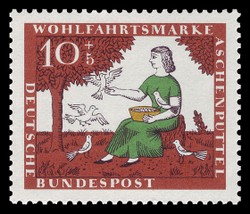
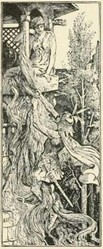
What is your favorite version of Red Riding Hood?
Derdru Marriner - it's work of Harry Clarke. He was a part of Arts and Crafts movement but his style is an eclectic mixture of Art Nouveau, Art Deco and Symbolism.
Your characters fact has an interesting image.
What version is that image associated with? It looks quite French to me, and even more elegant than rustic in the wide skirt so popular in revolutionary France and in the War Between the United States.
I didn't see this one. Happy endings are still the most popular, right? The Grimm's version with both saved is my favorite too. Thanks, Maggie Crooks, for your visit and comment.
My favorite version is the 2011 movie, Hoodwinked. In the end Red, Grandma, Wolfie become friends. Among the versions you mention, I guess the one in which the woodsman saves both Red and Granny.
Thanks for your feedback, AnomalousArtist!
I've always loved this topic of these iconic characters/situations (like so many people), thanks for shedding some light on WHY it's so popular!
@WriterArtist, you are right, both carry strong messages and can be effective in many, although different situations.
Well, I liked both the versions because each of them have a morale to learn.
Kids will always be kids, right?
Red Riding Hood does have some lessons for girls. Things don't seem to change much. Unfortunately, sanitized versions leave them even more vulnerable.